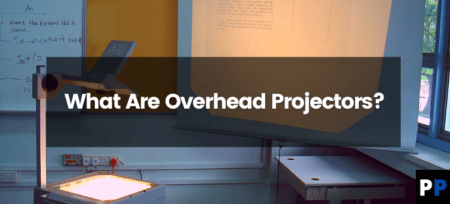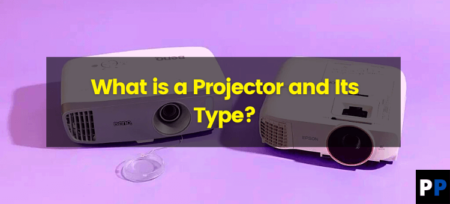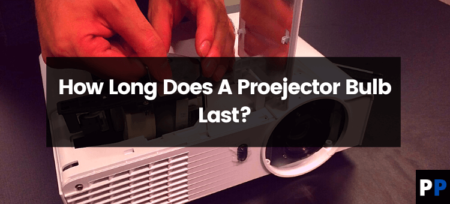Movie theatres offer a place where people can assemble to see films, a very well-liked kind of entertainment. While watching a movie is usually enjoyable, it can be costly, whether you’re watching it in your bedroom or camping.
One of the highest costs of watching a film in the theater is renting or purchasing a projector. How does a theatre projector set you back? What factors influence the cost, such as screen size, brightness level, resolution, etc.? This blog will examine a few factors determining how much you can spend on projectors.
Average Price Of A Movie Theater Projector
The cost of the projector in a theater is about $110,000. The price depends on the kind of projector a theater needs and its specifications.
An LCD projector, for instance, is generally more expensive than a DLP projector.
If you’d like to own an entertainment projector at home but do not need all the benefits and features, you can get one priced between $3,000 and $7,700. Projectors that resemble movie theatre models are available for home use from companies like Sony, BenQ, and JVC.
For under 3000 dollars, you will get an LCD projector similar to the BenQ HT5550, which gives you a theater-like experience right at home. These projectors can also display auditoriums for business meetings or classrooms to show lessons on screens.
Technology Which Movie Theater Projector Used?
Projectors for movie theaters are usually sophisticated equipment to show the film on screens.
Movie theaters may employ LCD, DLP, or LCoS projection technology.
A 3D projector may use 3-D stereo projection technology, but Sony projectors utilize their own designed SXRD technology for projection.
Different Kinds Of Projectors Used In Theaters
35mm ProjectorsTechnically speaking, 35mm film was discarded in the 1990s, but it’s still in use in cinemas. Projectors are much less expensive and require less upkeep.
They employ a metal drum to move the film instead of cartridges. A large portion of the cost is the travel expense to move the projector from one location to another. In the end, these projectors cost about $25,000.
Digital Projectors
They are high-resolution and produce lesser noise than many other kinds of projections. Digital projectors aren’t nearly as expensive as other film projection equipment. However, they need a lot of maintenance, including maintaining the lenses and lamps in good condition.
The lights must be changed every few months and might cost up to $700. Additionally, the price of these projectors isn’t set but may change according to the market conditions.
Xenon Projectors
Across all projector types, xenon projectors are one of the most costly. They operate by creating a light source of high intensity, which results in a brighter image. The weight required to transport an entire film reel is about 200 pounds, weighing about 2500 pounds. The price for a Xenon Projector is about $200,000.
Other Types of Projectors
Here are some other types of projectors that you can also use for making a movie theater.
Laser Projectors
Laser projectors are another digital projector that utilizes an LCD with a single panel. The image is made with a green, red, and blue (RGB) laser. These projectors come with frames that run in 24 frames/sec. Even though they’re high-resolution, the quality of images isn’t as crisp as the standard LCD technology with resolutions of 1080 x 480 pixels. The price of laser projectors can reach as high as $200,000.
LED Projectors
Instead of a conventional filament bulb, the LED projector uses LEDs to emit light. This projector technology can be more effective, less expensive, and environmentally friendly than the earlier projectors. LEDs are commonly used in CRTs and TVs with backlighting displays, such as televisions and computer monitors. However, the film industry hasn’t yet made use of the technique.
Active 3D Projectors
Active 3D Projectors represent among the most advanced technology for cinema projectors. They combine technologies such as LCD, LED, laser light sources, and various mirrors to produce images. They have a strong luminescence as well.
What Is The Difference Between An IMAX Projector And A Digital Projector?
The significant distinction between the IMAX projector and digital projectors is that IMAX projectors have been specifically intended to be used within IMAX theaters.
On the other hand, digital projectors are used in many situations, such as cinemas, schools, and even businesses.
The primary distinction between an IMAX projector and digital ones is that IMAX projectors are specifically designed to be utilized within IMAX theaters.
On the other hand, digital projectors are in applications in various scenarios, including schools, cinemas, and even businesses.
How to Maintain a Movie Theater Projector?
Proper film theater projector maintenance is vital to ensure maximum performance. It involves cleaning and maintaining the projector and many other parts like the lenses and wiring.
The kind of surface the projector will be used on must also be considered, along with the lighting conditions in the surrounding area.
Because the majority of movie projectors are light-based and emit lots of heat. So, a projector room requires proper cooling. Due to the temperature, a movie theatre projector lamp is also prone to low performance.
Consequently, the lamp needs to be changed regularly. A projector lamp will become dimmer as it gets utilized.
Maintenance Costs for Projectors
- Lenses: $2000 and above for a set of two lenses and the frame that projects the image onto the projector.
- Lamp: $750 on a 35mm projector or $3000 for the Xenon projector.
- Electric Motor: Initially, it’s about $10,000; however, as you’d expect, they tend to grow each calendar year as new buttons, and other functions are added. This implies that more components will have to be replaced as time passes.
- Screen: The price of an average screen is $4000. However, this can be as high as $20,000.
- Projector: This is the most expensive piece of equipment, estimated at $30,000. Only a small number of theatres utilize them because of this.
Depending Factors
There are many factors that depend on and that determine how much a movie theater will cost. Depending on these features you’ll get the exact amount.
Projector Brand
The projector’s brand has a significant influence on the cost. Christie, Barco, and Sony are the priciest brands. Projectors range in price between $10,000 and $100,000.
On the other side, reasonably affordable brands like Epson and ViewSonic sell projectors for less than $1,000.
Projector Technology
Projectors are available in two primary varieties: analog and digital. Digital projectors use digital light processing or a display panel chip, unlike classic projectors that use a cathode ray tube to display the image.
Projectors equipped with a digital processing chip tend to be more expensive than those equipped with LCD chips. This is because they are more efficient. DLP chips are more effective and can produce better-quality images.
3D Technology
Many films are released in 3D, and should you wish to watch these films in a theater, you’ll require a 3D projector. They are more expensive than standard projectors, and their cost can differ according to the projector’s features.
Resolution Of Intent
The resolution of the projector can be measured in pixels. The larger the resolution, the larger the number of pixels the projector can display, and the sharper the image will appear.
The majority of projectors have resolutions in the range of XGA (1024×768) (or WXGA (1280×800). However, there are projectors with resolutions of 1920×1080 or more. Compared to those with lower resolutions, they are more costly.
Motorized Technology
Some projectors are equipped with a motorized lens which allows users to control the focus, zoom remotely, and tilt of their projector. This feature is usually present on higher-end projectors.
Screen Size
The screen size the projector projects onto will also impact the price. The bigger your screen is, the more costly the projector will cost.
Brightness
Lumens are a unit of measurement for projector brightness. The image appears brighter as there are more lumens.
Most projectors have a brightness that ranges between 2 and 3000 lumens. There are, however, projectors with a brightness of more than 5,000 lumens. They cost more than counterparts with less brightness.
Warranty
Projectors are covered by a range of warranties. The duration and the coverage of the warranty may impact the cost.
The higher the cost of the equipment, then the longer the warranty.
Parts of a Movie Theater
Here are some parts which may use for making a movie theater and which may cost you a little bit.
Lens
The projector’s components that project images onto the display are called lenses. It’s typically a spherical glass lens that is bent to correct distortion.
Lamp
Lamps are the projector’s elements that produce the light needed to show the image. It is made up of a metal cylinder with a bulb filled with gas.
Electronic box
It is the electronic component of the projector that houses the circuitry responsible for creating the image. It’s a metallic box that is usually located behind the camera.
Cooling system
The projector’s cooling system cools the light and the electrical box. It’s a fan made from metal that is located at the rear of the projector.
Focus mechanism
The mechanism for focusing is the projector component that permits you to change the picture’s focal point. It’s a steel wheel situated near the projector’s top.
Primary lens
A primary lens forms a crucial component of the projector and can be used to correct distortion. This spherical lens is placed directly in front of the projector.
Conclusion
The price of projectors varies on the model of the projector, its size, and the characteristics of the model. Projectors with 3D active technology are the most costly. Laser projectors are now the preferred choice for companies and schools due to their brightness and the quality of the picture.
They are typically the most inexpensive kind of projector; however, the quality of their images is not like other kinds of projectors.
Thank you so much for reading this article, I hope it may help you to solve your problem. Take care














